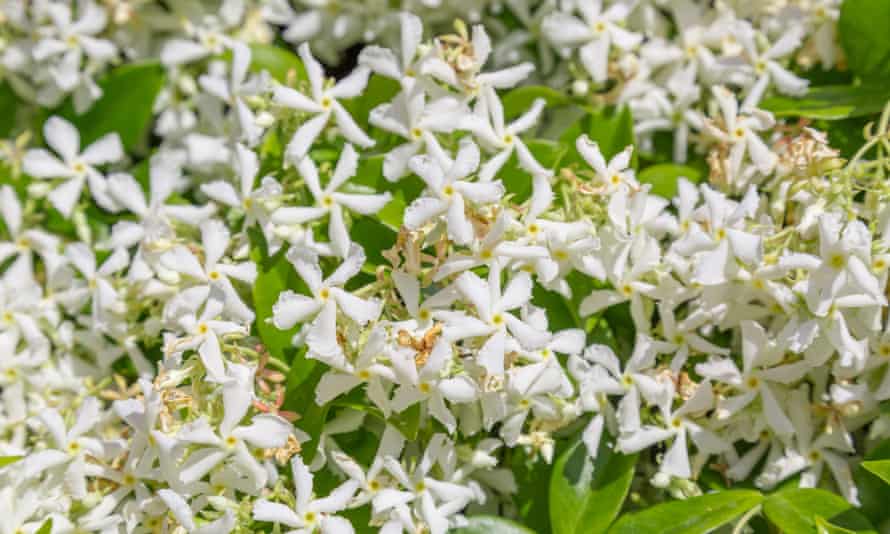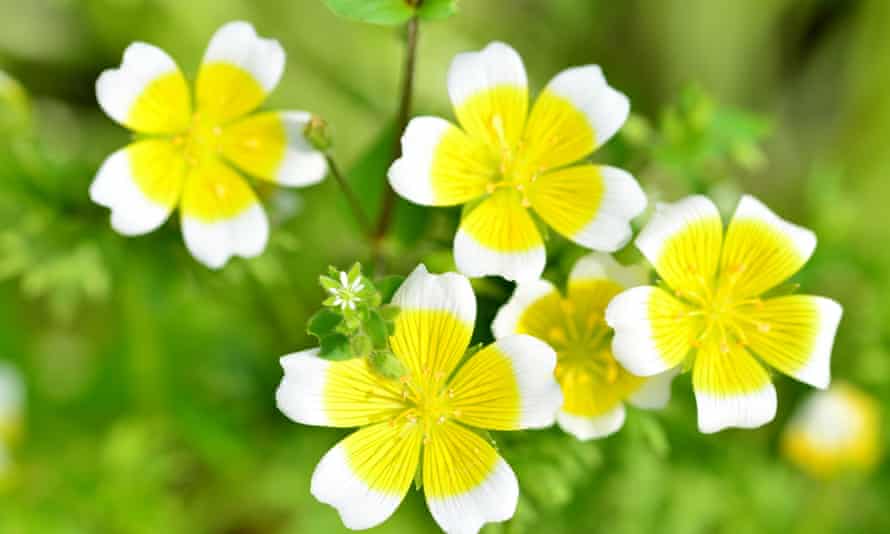Spring doesn’t officially arrive until 20 March, but our gardens are already starting to wake up: from frogspawn lacing ponds to crocuses poking through the grass. Now is the time to get busy with plans for the growing year ahead.
Five things you should plant
-
Plant flowering climbers now and you can clothe walls and fences, turning a barren surface into a vertical habitat for wildlife, from roosting birds to bees in search of a meal. The choices are endless, but here are two of my favourites: star jasmine which, with its white scented blooms, is ideal for sunny, sheltered spots, but needs a trellis or wires to climb, and climbing hydrangea (Pileostegia viburnoides), which needs no support and thrives on shady, north-facing walls.
-
Growing potatoes in planter bags or other containers (a bucket with some holes in the bottom, for instance) may not break any records for self-sufficiency, but the treasure hunt through the soil for spuds is great fun. The Lady Christl and Casablanca varieties have both won awards from the RHS for their reliability as container-grown crops. Plant the tubers into a layer of about 20 litres of peat-free compost, then add more as they grow, until the level of compost is just short of the top of the container.

-
If you like a challenge and want to bring some tropical pizzazz to your garden, buy some Caladium tubers. Their dramatic brightly patterned leaves make a stunning summer display, but you will need to plant them in pots on a warm windowsill inside to get them started, only planting outside once the weather warms up in May. You may be able to source tubers from a garden centre, or try the bulb supplier Farmer Gracy.
-
Choose the right variety and chilli plants can be compact enough for a windowbox, pretty enough to count as an ornamental and productive enough to supply you with a year’s worth of hot fruits. Soak seeds in water overnight then fill a pot or tray with moist seed compost. Sow the seeds sparingly – perhaps half a dozen in a 6cm-diameter pot; cover with a sprinkling of vermiculite (or more compost) and place in a clear plastic bag in a warm place. Purple Tiger is a pretty, compact variety with variegated leaves and medium heat fruits; Prairie Fire is hotter but compact enough for small spaces.
-
Snowdrops are pretty, but it’s the emergence of the first sweet violets with their inky purple flowers’ heady scent that reassures me spring is on the way. These British natives can still be spotted dotting hedgerows this month and you can also add them to your garden as ground cover in shady borders. Breeders have created many fine cultivars in shades of purple, pink and white: Devon Violet Nursery has an impressive range.
Five garden maintenance tasks to complete
-
Adding a blanket of mulch to beds will help to suppress weeds, improve soil structure and lock in moisture. It is wise to hold off until conditions are right, only applying mulch to soil that’s clear of weeds, moist and not frozen. Homemade compost, wood chippings and spent mushroom compost are all ideal. Aim for a layer 5-8cm thick around the base of shrubs and trees.
-
If the soil in your pots and raised beds has slumped and shrunk over winter, it is time to add a revitalising top-up. Start by removing any weeds then add peat-free compost (Melcourt’s Sylvagrow is perfect) but don’t fill to the brim: leave some space for watering. A top layer of grit, gravel or bark chips will hold soil in place and foil weeds.

-
If you have dreams of juicy courgettes or a rampant pumpkin patch this summer, start your prep now by feeding the soil. Dig a hole about 60cm deep and tip in vegetable peelings, strips of corrugated cardboard, eggshells and other kitchen waste you’d usually add to a compost heap. Cover over with soil and let it sit: it will be at least another month before it’s seed sowing time, which gives the waste plenty of time to break down and enrich your planting spot.
-
If you have a pile of woody prunings, don’t exile them to the green waste bin: twiggy bits can be stuck into the ground around newly emerging perennial plants to act as supports, or start your own “dead hedge” by stacking branches between two lines of wooden stakes: this acts as a windbreak and offers homes for wildlife.
-
Warmer weather brings with it the annual surge in the slug population: there are many approaches to controlling these pests, but nematodes are among the safest and most reliable. This biological control is watered on to the soil and the microscopic worms go to work killing slugs. The key is following the instructions carefully: soil temperature must be a steady 5C before you proceed.

Five other ways to enjoy your garden
-
The poached egg plant (Limnanthes douglasii) is a cheery and useful addition to the vegetable patch, as its white flowers with a yellow centre are beloved of pollinators. This and other hardy annual flowers such as California poppies and nasturtiums can be sown in neat lines or scattered across beds: prepare the soil by weeding and breaking down large lumps before you start.
-
Weeds can be surprisingly useful: have a look around your garden and you may find edible invasives such as chickweed (Stellaria media), garlic mustard (Alliaria petiolata), bittercress (Cardamine hirsuta) and dandelions (Taraxacum officinale) all ready to harvest. Pick off the youngest, most tender leaves and stick them in a big bowl of salted water for a few minutes, then rinse thoroughly and drain. The classic forager’s guide Food for Free by Richard Mabey will help you correctly ID the edibles and avoid anything poisonous.
-
The strange truth about spring bulbs is that however many you plant in the autumn, in spring you realise you should have bought 10 times more to create the desired drifts of colour. By the time planting season rolls around again, you will have forgotten where the gaps are, so make a note – take photos if you need to – listing the gaps that need filling. There is also no shame in taking the quicker, but more expensive, shortcut of buying ready-grown bulbs in pots to plant now.
-
Hedgehogs are starting to come out of hibernation now, so leave shallow dishes of water and make your own hedgehog feeding station supplied with wet dog or cat food, or special hedgehog kibble. It doesn’t have to cost much: a large plastic box with a hole cut in the side and weighed down with bricks will suffice. Visit Hedgehog Street for advice and inspiration.
-
If you are running out of pots, raid the kitchen before buying anything new. Yoghurt tubs, plastic kitchen bins, mop buckets and salad bowls can all be repurposed for growing, and clear lidded containers from delis or supermarkets make perfect seed trays. Just make sure you punch in drainage holes so that excess water can escape.
The main picture on this article was changed on 4 March 2021 from an African pygmy hedgehog one to that of a European one
from Lifestyle | The Guardian https://ift.tt/3qbHpkx
via IFTTT

comment 0 Comment
more_vert